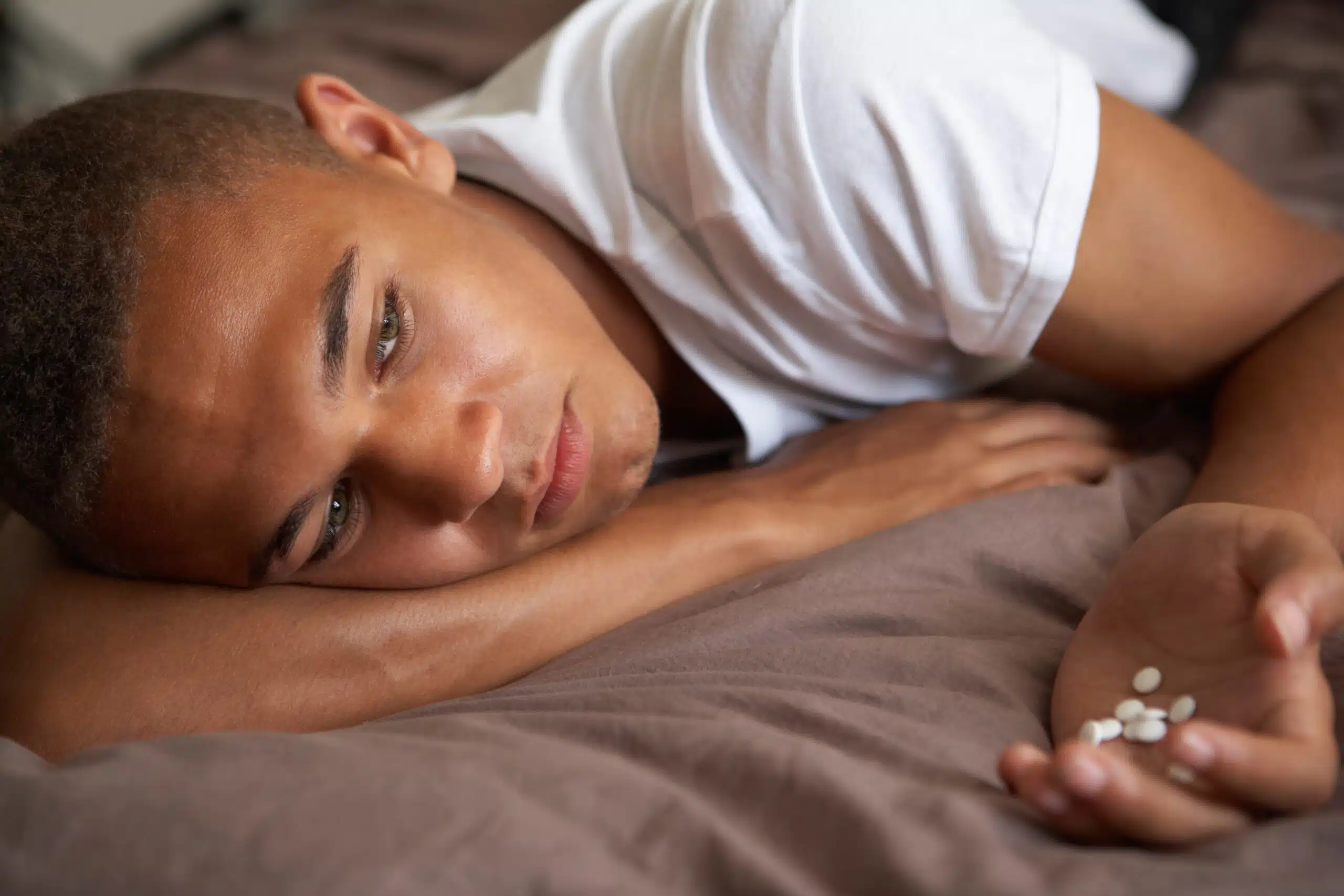
Multidimensional Family Therapy: Find Your Program
There are many different treatment interventions used in adolescent and teen mental health and addiction treatment facilities. However, a few are entirely effective in addressing dual diagnosis conditions. Research shows that substance abuse in adolescents and teens is rarely a standalone problem. Quite the opposite is actually true. It is highly uncommon for a teen to struggle with a substance use disorder and not with another pre-occurring developmental or mental health condition. Unfortunately, many treatment programs continue to treat and view co-occurring problems as separate and distinct issues requiring individual treatment programs to address the needs. While this method was once considered standard, time and progress in the mental health and addiction treatment fields have proven that addressing co-occurring disorders or dual diagnosis conditions as part of a simultaneous treatment program offers the best opportunities for positive treatment outcomes.
Multidimensional family therapy is a program designed to address co-occurring substance use and mental health conditions in adolescents and teens. As the name suggests, it is a family-based treatment approach designed to help teens and adolescents struggling with co-occurring mental health and addiction related disorders learn safer and healthier ways to manage their mental health struggles without turning to drugs and alcohol. Depending on the treatment program and the treatment environment, multidimensional family therapy may occur in the outpatient setting or in an inpatient teen-focused rehab like Beachside.
How Does Multidimensional Family Therapy Work?
Multidimensional family therapy has two primary goals for each family participating in treatment. The first goal is to help the adolescent or teen achieve developmentally appropriate attachments or bonds to their family members. Many teens who struggle with substance use disorders also struggle with behavioral or mood related disorders. Key symptoms to both conditions generally involve increased isolation and sometimes difficulty forming appropriate bonds with their family or caregivers. This is especially true in particular mental health conditions such as reactive attachment disorder.
The second goal of multidimensional family therapy is to help your teen build strong connections and supportive relationships in areas outside of the family unit. This includes peer groups, athletic teams, school, vocational programs, and a wide range of other positive outlets, including extracurricular activities and church groups. Again, many teens participating in multidimensional family therapy are doing so to overcome struggles related to both addiction and behavioral mental health conditions. It is not uncommon for symptoms of these mental health conditions to include struggles fostering and maintaining effective friendships, romantic relationships, and relationships with family and loved ones.
A Program in Four Components
Multidimensional family therapy strives to help your teen overcome a destructive relationship with drugs and alcohol while learning to manage problematic behaviors successfully. The therapy model seeks to achieve these goals through various components. Interventions address four areas of your teen’s life, including parents, family, community, and the adolescent. Each domain has specific objectives or goals to achieve as part of therapy.
Goals for the parents include helping to improve parental investment and commitment to their teens. By accomplishing this, the overall relationship and ability to communicate (between parents and teens) will improve. Additionally, therapy sessions provide information and education on improving parenting practices such as granting teens appropriate amounts of autonomy and setting and enforcing limits.
Goals or objectives for the family include a range of tools and skills designed to reduce overall conflict in the household. For example, improved communication, better negotiation, improved family management, enhanced problem-solving skills, and others. The overall goal for the family is to reduce the amount of conflict, stress, and anxiety within the home environment. Research shows that increased stress and anxiety are risk factors for elevated instances of substance use and abuse in teens (and adults). Therefore, if multidimensional family therapy can help to reduce the levels of unpleasant emotion in the family environment, therapy may reduce opportunities for relapse after treatment.
Community objectives include those things that your teen can do within their community and social circles to improve their mental health. Some examples include learning how to build protective factors within their community, participating in peer support groups, and reducing their interaction with negative members of their social circle or communities that may increase their interaction with law enforcement or other harmful outcomes.
Finally, objectives for your teen include transforming their lifestyle to reduce instances of drug and alcohol use. By doing so, it can improve their emotional, physical, and spiritual well-being. It will also help reduce negative interactions that increase stress and increase your teen’s risk of relapse after treatment has ended.
Each of the components is addressed in three phases. It is essential to progress through the phases as each builds upon the other. The first phase is to form a therapeutic alliance and build a foundation for therapy. During this phase, the teen and their family will develop a relationship with their mental health treatment team. This is crucial as trust is a significant challenge for many adolescents seeking to overcome addiction and mental struggles. Suppose your teen and family develop a strong working relationship with your therapeutic team. In that case, it will help improve overall treatment outcomes as communication and willingness to progress through therapy are improved.
The second phase is to take action and make changes. This phase is relatively self explanatory. It is the point in treatment where the lessons learned as part of therapy are put into place. Finally, the third phase is to “seal the changes and exit.” At this point, several treatment sessions have occurred, and your teen and family have worked to address the individual treatment objective listed as part of multidimensional family therapy goals. If treatment is successful, at this point, relationships both within the family and outside of the family have improved, and therefore, it is possible for your teen and family to move forward from treatment free from the challenges that substance use and mental health struggles previously created.
As part of therapy sessions at Beachside, a highly skilled therapist will work with your teen and your family on addressing the four components above as well as any underlying symptoms or struggles your teen has related to substance use or an underlying mental health condition. The duration and frequency of sessions will depend on your teen’s specific needs. Depending on the severity of their addiction and the severity of their mental health symptoms, therapy may occur between one and three times a week. Most therapy programs last up to six months; however, they can last longer if it’s deemed beneficial for your teen and your family. There are various versions of multidimensional family therapy offered in outpatient settings, residential treatment facilities like Beachside, and even day treatment programs and juvenile justice settings.
The Ten Principles of Multidimensional Family Therapy
Multidimensional therapy is considered one of the best treatments for adolescents struggling with substance use and mental health conditions. Some studies show that multidimensional family therapy used in the United States led to up to a 60% reduction in drug use among teens and adolescents in 2017. Additionally, marijuana and alcohol use cases fell by over 70% in some studies. Part of the success of therapy sessions focuses on addressing the principles of multidimensional family therapy. These principles help guide treatment providers as they work with your family. There are ten specific principles of multidimensional family therapy, including:
Adolescent drug abuse is a multidimensional phenomenon.
Problem situations provide information and opportunity.
Change is multi-determined and multifaceted.
Motivation is malleable.
Working relationships are critical.
Interventions are individualized.
Planning and flexibility are two sides of the same therapeutic coin.
Treatment is phasic, and continuity is stressed.
The therapist’s responsibility is emphasized.
The therapist’s attitude is fundamental to success.
Multidimensional family therapy practices are highly beneficial for teens struggling with substance use disorders and co-occurring behavioral disorders. They are especially helpful for teens who are struggling with delinquency or other issues that bring them into contact with the legal system at an early age. A significant body of research shows that multidimensional family therapy is highly effective in helping reduce instances of delinquency, reduce violent behavior, and eliminate substance use disorder struggles in teens in families who complete unentitled therapeutic programs. Of course, multidimensional family therapy is not beneficial for everyone, and it is important to discuss different therapy options with members of your teen’s mental health treatment team at Beachside.
Choosing a therapy environment for your teen is a difficult decision for a parent. We understand that it can be hard to consider sending your child somewhere outside the home to receive the help they need to recover from substance abuse and mental health struggles. Many of our providers are parents themselves and realize the decision to reach out for help to the team here at Beachside is complex and challenging. Let us help your family heal and repair relationships that have been damaged by the influence of drugs and alcohol.
Contact our admissions team if you would like to learn more about our programs at Beachside, including multidimensional family therapy and other behavioral therapies frequently used to address substance use disorders and mental health conditions in teens. At our California teen focused rehab, our caring and compassionate treatment providers will work with your family from the beginning to design a comprehensive treatment program focused on your teen’s physical, psychological, and spiritual being. Our programs combine evidence-based treatment models such as multidimensional family therapy with comprehensive medical, nutritional, and emotional care. If you would like to learn more about how our programs can help your family, contact us today.
https://www.ncbi.nlm.nih.gov/pmc/articles/PMC2843091/
https://www.ncbi.nlm.nih.gov/pmc/articles/PMC2916747/
https://crimesolutions.ojp.gov/ratedprograms/267#ar
https://www.uwsp.edu/conted/Documents/MHSUR/MDFT%20Panel%20Presenation%20Witt%20Vaziri.pdf
https://onlinelibrary.wiley.com/doi/full/10.4073/csr.2015.8
https://www.chestnut.org/Resources/f6a1021a-cf34-4cd7-8996-a0de93ba1c3d/MDFT_Manual_ATM_Study.pdf




